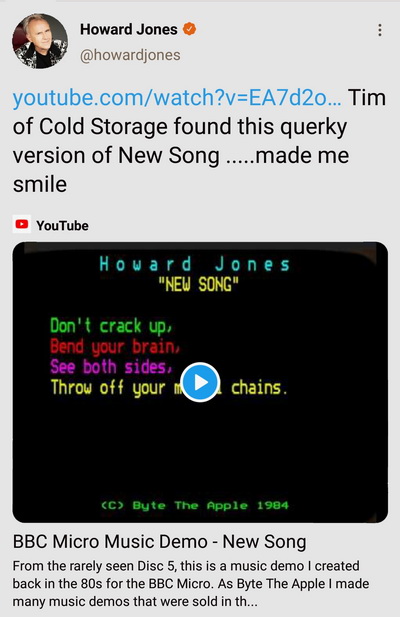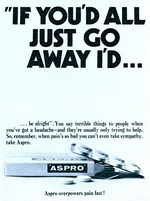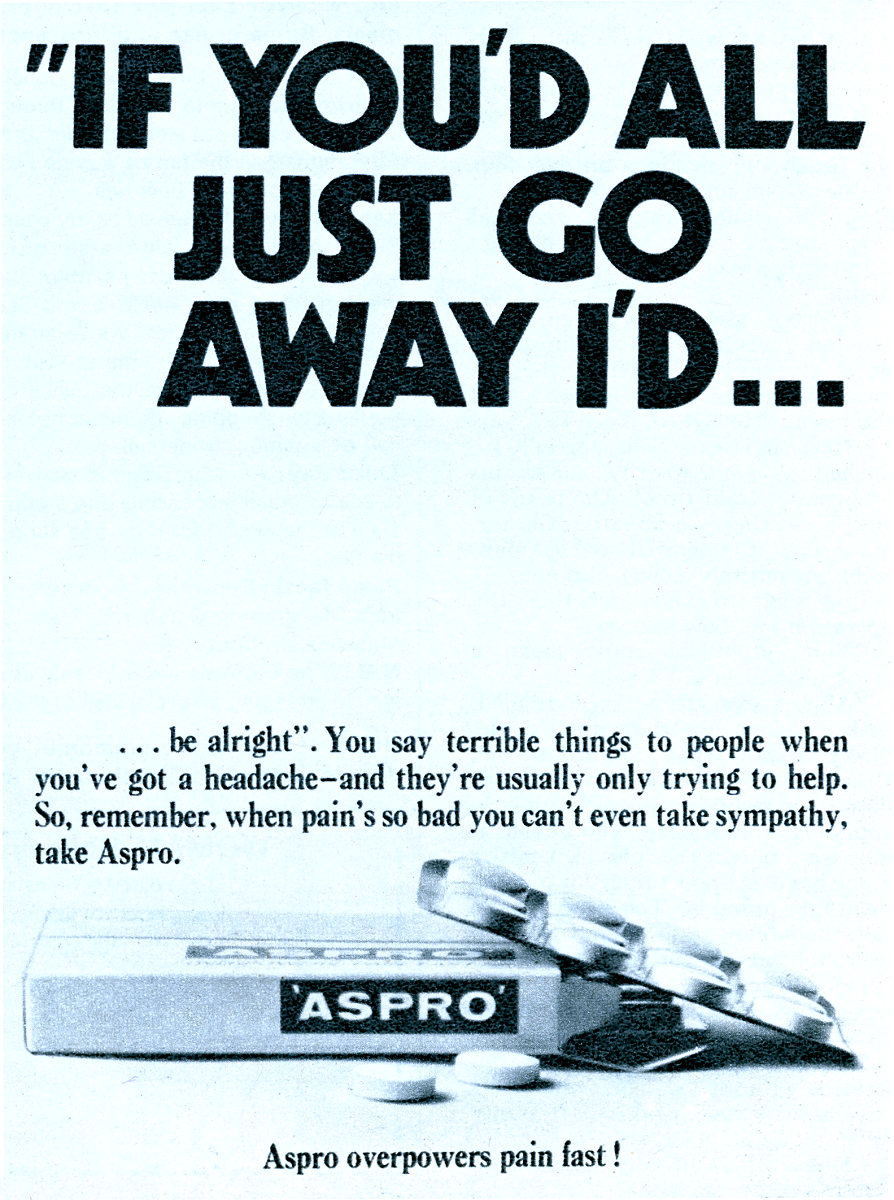F.A.Q. BBC Music Demo - New Song
This video was part of my collection of BBC Micro demos and was featured on the Disc 5 set. You can find it on my YouTube channel at http://youtu.be/EA7d2oYLkgo but I've also embedded it below:
BBC Micro Music Demo - New Song
 On the 12 March 2021, Howard Jones tweeted a link to my video and said that it made him smile. It was actually found by Tim from Cold Storage, but Howard
obviously has a wider audience and the tweet got me some views (although I can't say how many). I read the comments and thought I would answer some of the points
raised.
On the 12 March 2021, Howard Jones tweeted a link to my video and said that it made him smile. It was actually found by Tim from Cold Storage, but Howard
obviously has a wider audience and the tweet got me some views (although I can't say how many). I read the comments and thought I would answer some of the points
raised.
Haha 8-bit ceefax remix;) Well the program is running on a BBC Microcomputer in Mode 7, which uses the same fonts and graphics as CEEFAX.
Where's the Pac-Man / I half expected to see Pacman dancing a jig across the screen This was running on a standard Model B version of the BBC Microcomputer and used Mode 7 as that gave the most memory for the program itself. The program takes 6,818 bytes, leaving 18,526 bytes left for the all the variables used when running plus the memory allocated to the screen. Mode 7 only uses 1K of memory with 16 colours of teletext characters. Using a true graphics mode would use more memory, like Mode 1 which uses 20K and only has four colours. the disc drive system uses some of the available memory as well, which means there would be around 25,342 bytes free before a line of code is written. On a tape system this would be 28,158 bytes, but you would have to load everything from tape. Whilst it may have been possible to do a version of the Pac Man character in the chunky graphics available, there probably wouldn't have been enough memory as the computer only had 32K.
I was waiting for Sonic the Hedgehog to run past Like the question about Pac-Man, memory was tight on the standard BBC B Micro, so to get the most from it the program was written to run in Mode 7. Whilst I may have been able to draw Sonic using the graphics characters available, animating him would not have been possible without using assembler and interrupts. On some demos I used graphics modes and the music slows down when doing any sort of animation.
If a retro game maker doesn't pick this up, there's no justice in the world! I have not been approached by any game makers to use my music, which would have to be approved by Howard Jones (or whoever holds the rights to the music). Some of my tracks have been used on a Youtube video about games that started on the BBC Micro though.
Well, it's.... different / THIS is more like it <link to YouTube video> New song was released in the UK in September 1983. As you can see in the copyright message at the bottom of the screen, this version was done in 1984, but I can't remember what month.The BBC Micro only had three monophonic music channels and a noise channel. I had to reduce all the parts used on the original to play under these constraints. There is a technique where you can combine one of the music channels with the noise channel to get a better bass sound (like on my version of the Doctor Who theme) but I didn't used it on this one. The YouTube video, uploaded in May 2020 features a drummer and a keyboard player, both using General MIDI instruments (and probably some sequenced parts as well). If they only used three monophonic synths and played one drum sound at a time then it would be a fair comparison, but they're using a stack of modern equipment and I'm only using a home computer in 1984.
Keep doing those covers (and originals^^) I created these demos on my BBC Microcomputer, which is now probably in the attic. I do run a BBC Micro emulator on my PC (that's how I captured the video) but I don't write demos for the system anymore. My YouTube channel does feature all 38 demos that I made in the mid 80s, and there is a playlist of them.
Quite impressive, quite a bit of programming had to go into making that There's only two parts to the program, play the music and print the words in time. They both use a set of data that is read and then played, and this is the basis for most of my music demos. As it runs in Mode 7 it doesn't have any graphics, but other demos (like View To A Kill) have graphics and a little bit of animation. I made a video explaining all of this called a Brief History of my BBC Micro Music Demos.


